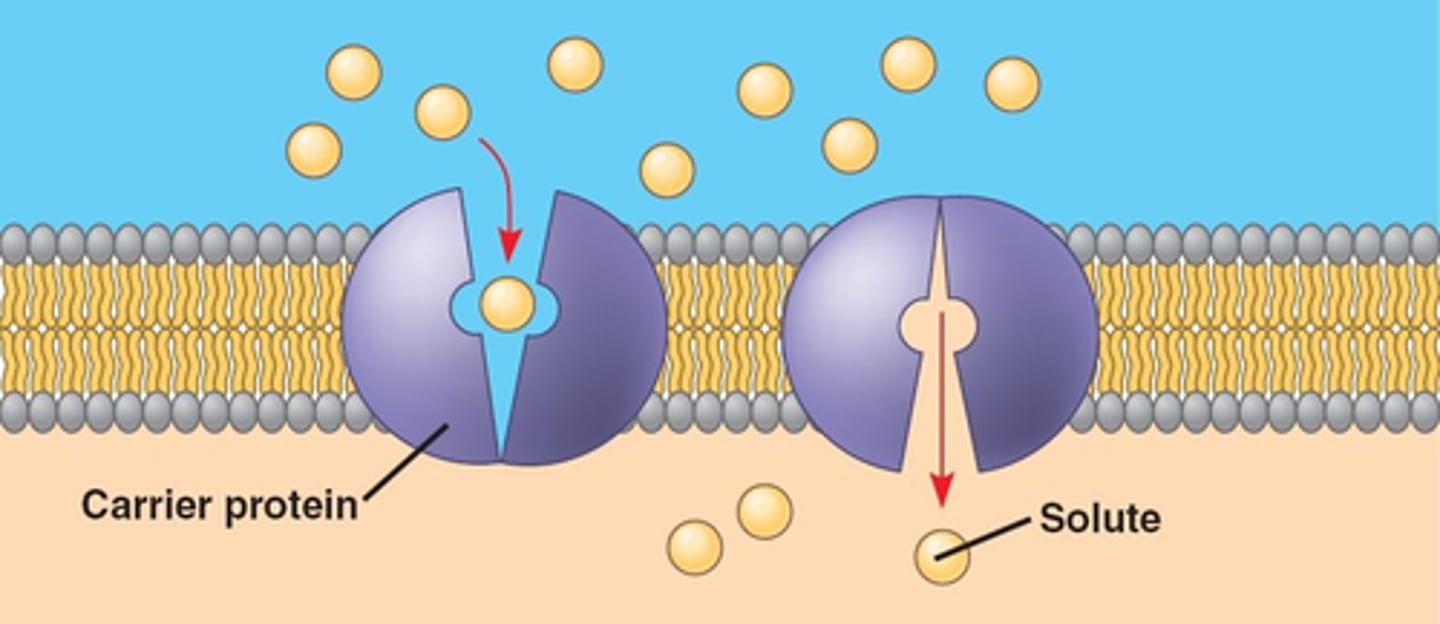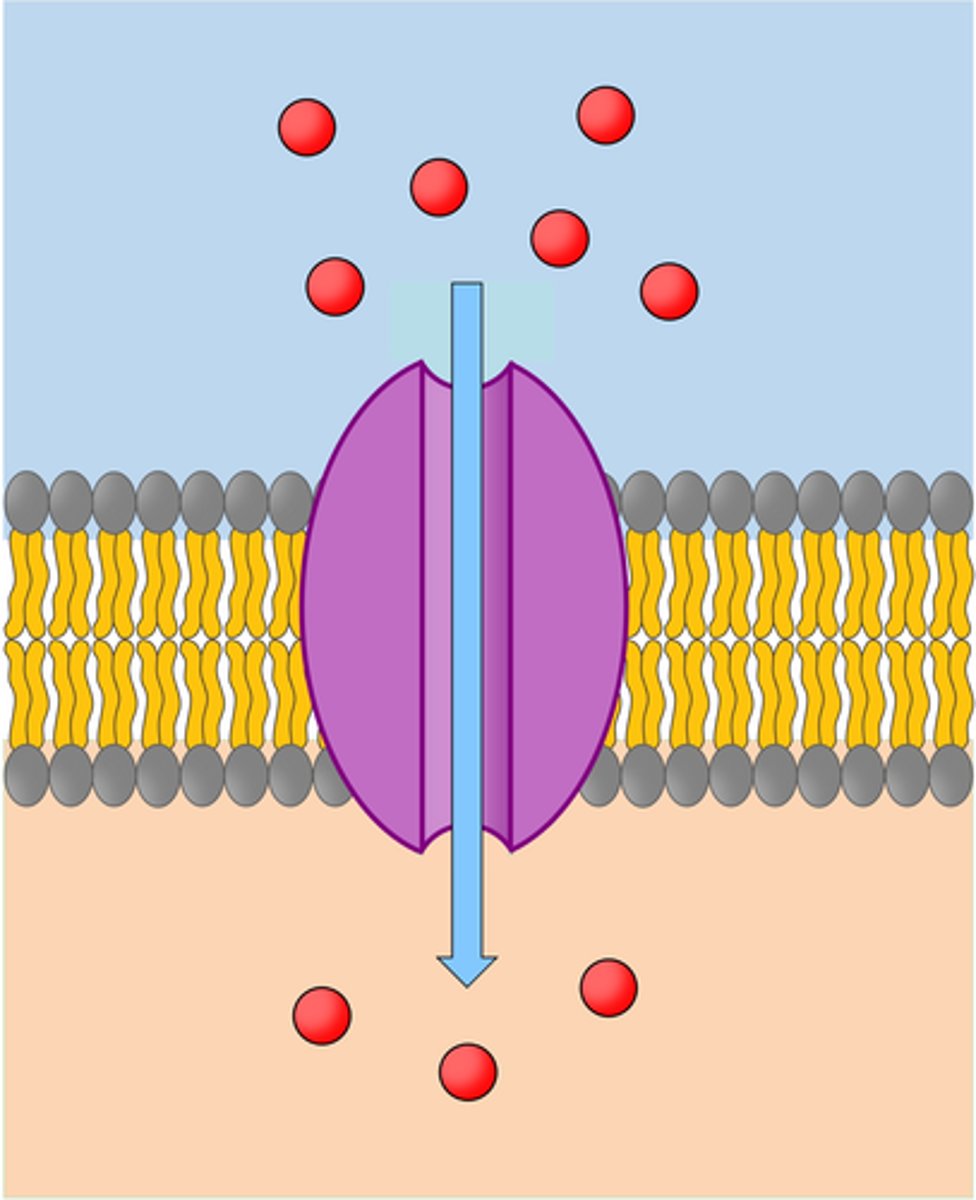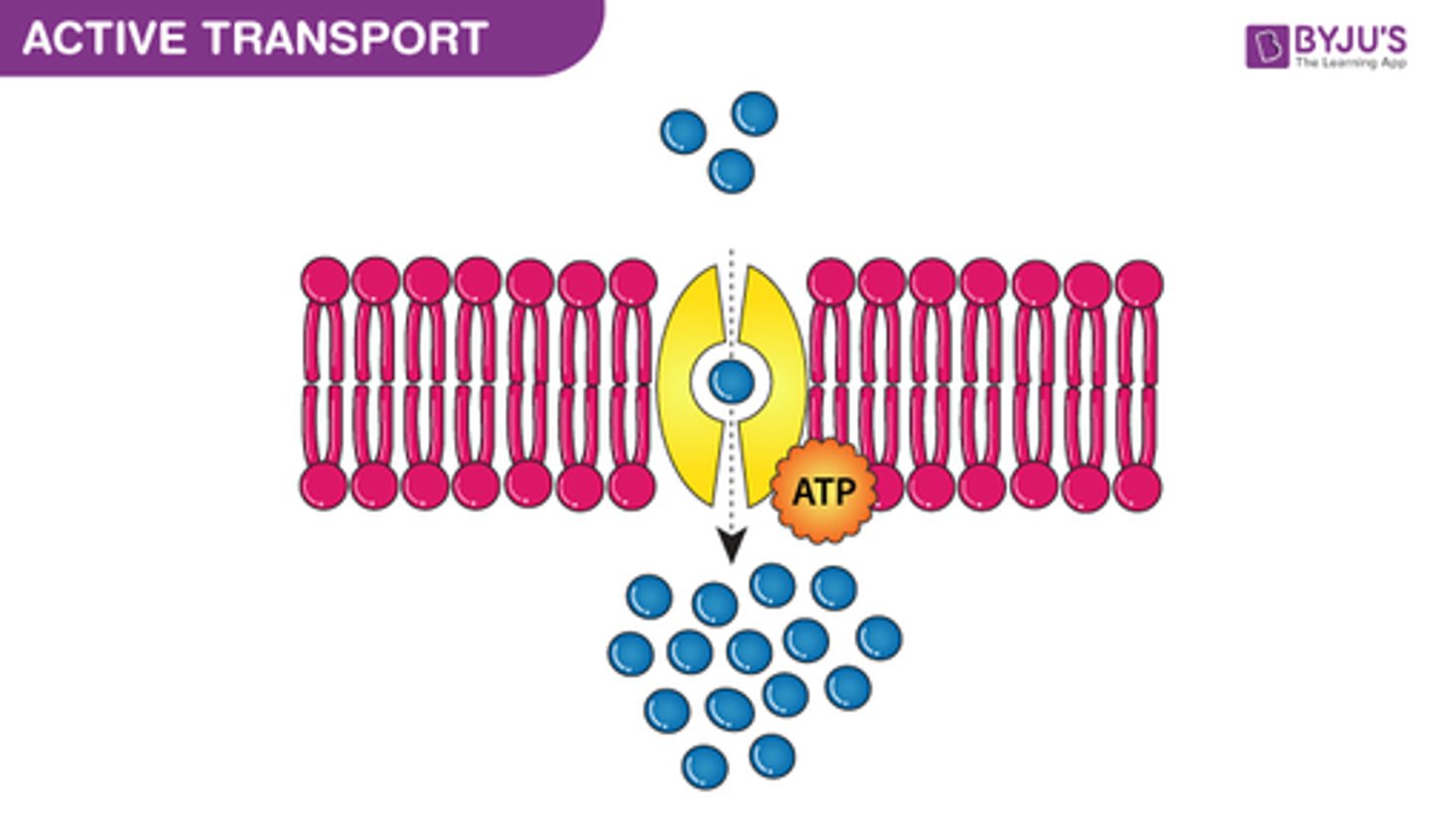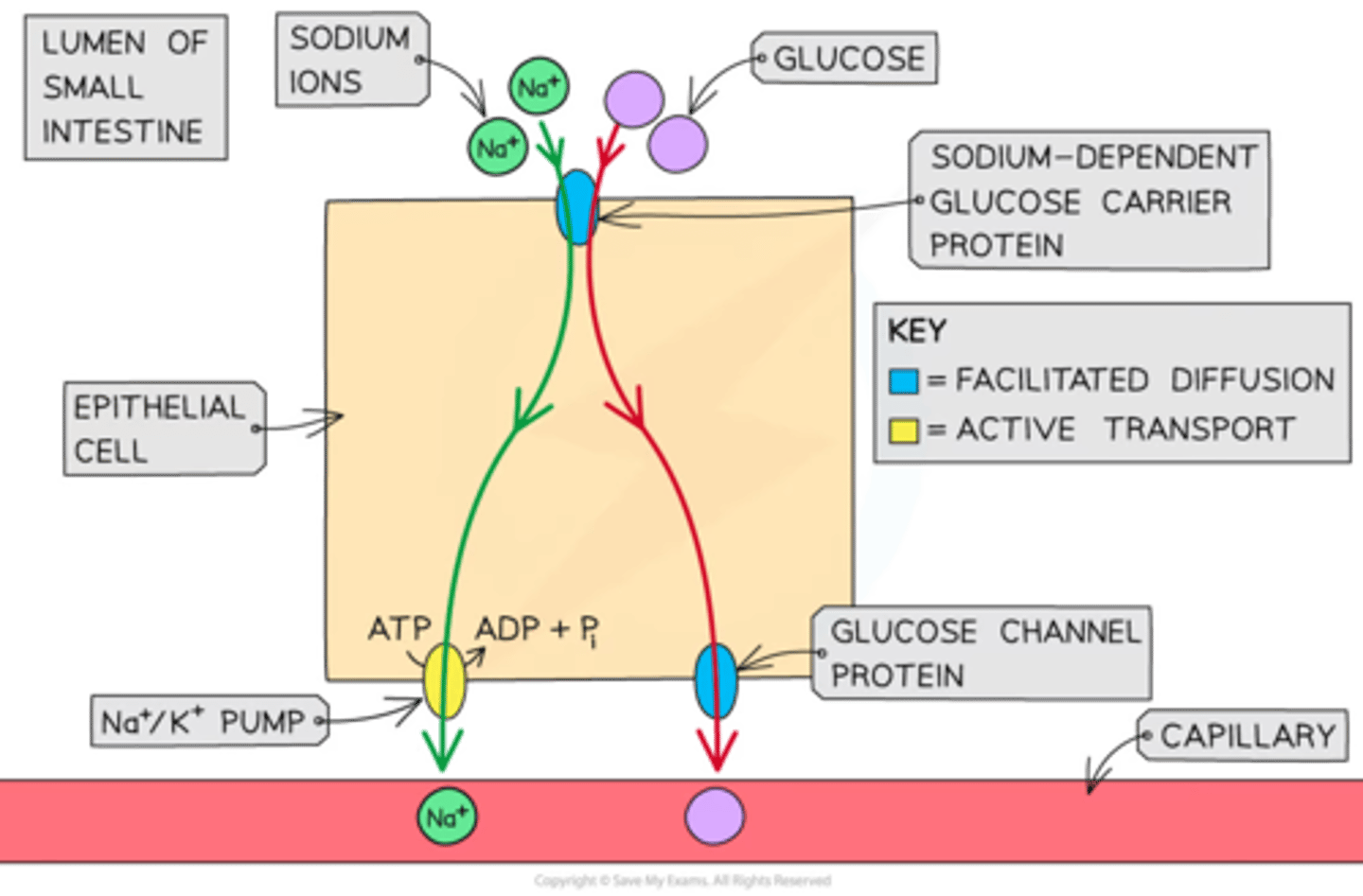StemUp: AQA A level Biology 3.2.3 Transport across cell membranes
1/38
There's no tags or description
Looks like no tags are added yet.
Name | Mastery | Learn | Test | Matching | Spaced |
|---|
No study sessions yet.
39 Terms
What are some examples of cell membranes? (3)
- Cell surface membrane
- Mitochondrial membrane
- Chloroplast membrane
What is common in all cell membranes? (2)
- They all have the same basic structure
- Which is the phospholipid bilayer
Describe why the cell surface membrane is described as fluid-mosaic (2)
- It is described as fluid due to the phospholipid molecules constantly moving about
- It is described as mosaic because there is an uneven distribution of protein molecules throughout the membrane
Why is the cell surface membrane described as "fluid"? (1)
Phospholipid molecules are constantly moving about within the membrane
Why is the cell surface membrane described as "mosaic"? (1)
There is an uneven distribution of protein molecules throughout the membrane
What are the components of the phospholipid bilayer? (4)
- Phospholipids
- Proteins
- Cholesterol
- Carbohydrates
Describe the structure of the phospholipid bilayer in terms of its phospholipid molecules (2)
- Hydrophilic heads of the phospholipid bilayer are oriented outwards towards the watery extra-cellular fluid
- Hydrophobic tails of phospholipid bilayer are oriented towards each other and away from water
What is the function of the phospholipid bilayer? (1)
Enables lipid soluble molecules to pass quickly through the cell membrane
What are some examples of lipid soluble molecules that pass through the phospholipid bilayer? (2)
- O2
- CO2
What is the function of the cholesterol molecules present in phospholipid bilayer? (3)
- Provides strength to the membrane
- Restricts the movement of phospholipids
- So that the membrane is less fluid and less ions are lost from the cell
What are the 4 examples of proteins present in the cell surface membrane? (4)
- Carrier proteins
- Channel proteins
- Embedded proteins
- Glycoproteins
What is the function of the carrier proteins present in the cell surface membrane? (1)
Allow transport of polar molecules by facilitated diffusion and active transport
What is the function of the channel proteins present in the cell surface membrane? (2)
- Determines which molecules can be transported across the membrane
- By facilitated diffusion
What is the function of the embedded proteins present in the cell surface membrane? (2)
- Important in 'cell signalling'
- Act as specific receptors for hormones
What is the function of the glycoproteins present in the cell surface membrane? (2)
- Act as receptors
- Involved in cell-cell recognition as they can act as antigens
Describe the movement of particles via simple diffusion (1)
Net movement of particles from a higher concentration to a lower concentration
Does simple diffusion require energy? (2)
- Passive process
- So does not require energy from respiration
What are the factors that affect the rate of diffusion? (3)
- Surface area
- Concentration gradient
- Diffusion distance
How does surface area affect the rate of diffusion? (1)
The higher the surface area, the faster the rate of diffusion
How does concentration gradient affect the rate of diffusion? (1)
The greater the concentration gradient, the faster the rate of diffusion
What does facilitated diffusion allow for? (1)
The transport of polar molecules down a concentration gradient through a membrane
What are some examples of polar molecules that are transported via facilitated diffusion? (2)
- Glucose
- Amino acids
What does facilitated diffusion use? (1)
Carrier and channel proteins
Describe the mechanism in which carrier proteins transport polar molecules via facilitated diffusion (3)
1. Polar molecule diffuses into carrier protein molecule
2. Molecule binds to carrier protein and causes it to change shape
3. Polar molecule will then diffuse out of carrier protein from the other side

Describe the mechanism in which channel proteins transport ions via facilitated diffusion (1)
Ions e.g. Na+ pass through the protein pore (space in the middle)

Describe the process of active transport (3)
- The movement of molecules or ions through a partially permeable membrane
- By carrier proteins against its concentration gradient
Does active transport require energy? (2)
- Yes
- From the hydrolysis of ATP during respiration
Describe the mechanism in which carrier proteins transport polar molecules via active transport (4)
1. Phosphate group attaches to the carrier protein using energy from ATP, activating it to accept the target molecule
2. Polar molecule diffuses into carrier protein molecule
3. Polar molecule binds to carrier protein and causes it to change shape
4. Polar molecule diffuses out of carrier protein

How is the polar molecule able to bind to the carrier protein causing it to change shape? (1)
Carrier protein has a specific tertiary structure complementary to polar molecule
How can cells be adapted for rapid transport across their membranes? (1)
- By an increase in surface area
- By an increase in the number of channel and carrier proteins in their membrane
What factors decrease the rate of respiration and therefore, active transport? (3)
- Decrease in temperature
- Lack of oxygen
- Metabolic and respiratory inhibitors e.g. cyanide
Describe the process of osmosis (3)
- Net movement of water molecules from a higher water potential
- To a lower water potential
- Through aquaporins
What are isotonic solutions? (1)
Solutions that have the same water potential
What has the highest water potential? (1)
Pure water
Describe what happens when you put a plant cell in a dilute solution (3)
- Water enters the cell via osmosis as the water potential inside the cell is less than the water potential in the surrounding solution
- Swells but does not burst
- Cell wall in plant cells prevents it from bursting
- The cell becomes turgid (swollen)
Describe what happens when you put a animal cell in a dilute solution (2)
- Water enters the cell via osmosis as the water potential inside the cell is less than the water potential in the surrounding solution
- This causes the animal cell to burst
Describe what happens when you put a cell in a concentrated solution (2)
- Water exits the cell via osmosis as the water potential inside the cell is greater than the water potential in the surrounding solution
- This causes the cell to shrink
What are co-transporters? (2)
- A type of carrier protein that binds to two molecules at the same time and transports them
- The concentration gradient of molecule 1 is used to transport molecule 2 against its concentration gradient
Describe the process of process of glucose entering the ileum epithelium by co-transport (5)
1. Sodium ions are actively pumped out of the epithelial cells into the blood using the sodium-potassium pump
2. This decreases the concentration of sodium ions in the cells, creating a higher concentration of sodium ions in the lumen than in the epithelial cells
3. Sodium moves from the lumen into the epithelial cells by facilitated diffusion
4. As the sodium diffuses, it brings glucose with it by sodium co-transport through its co-transport proteins
5. The glucose moves out of the epithelial cells and into the blood by facilitated diffusion using a carrier protein, down the concentration gradient
